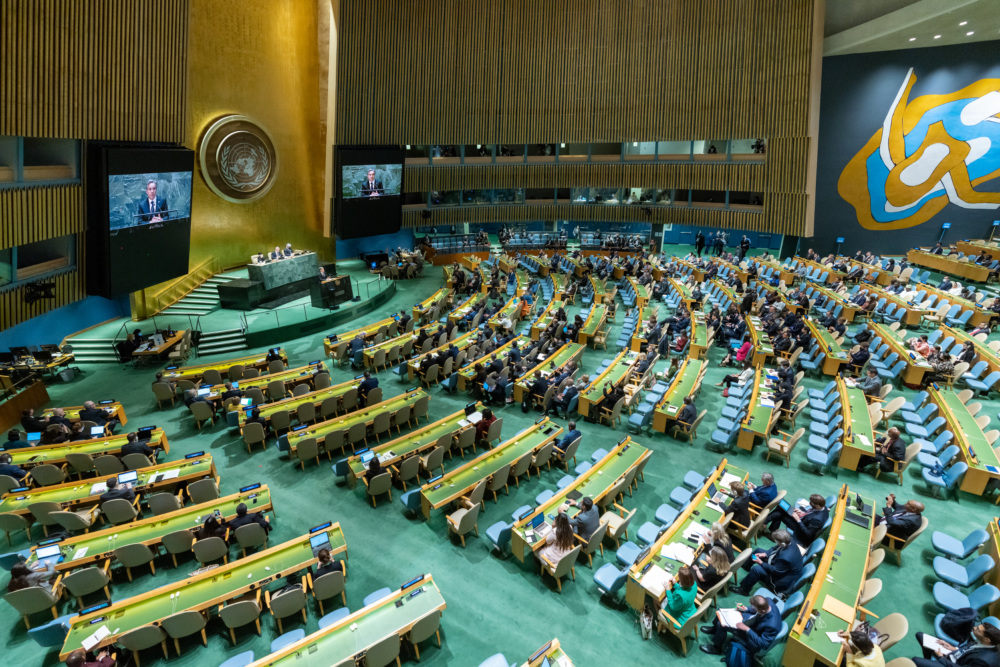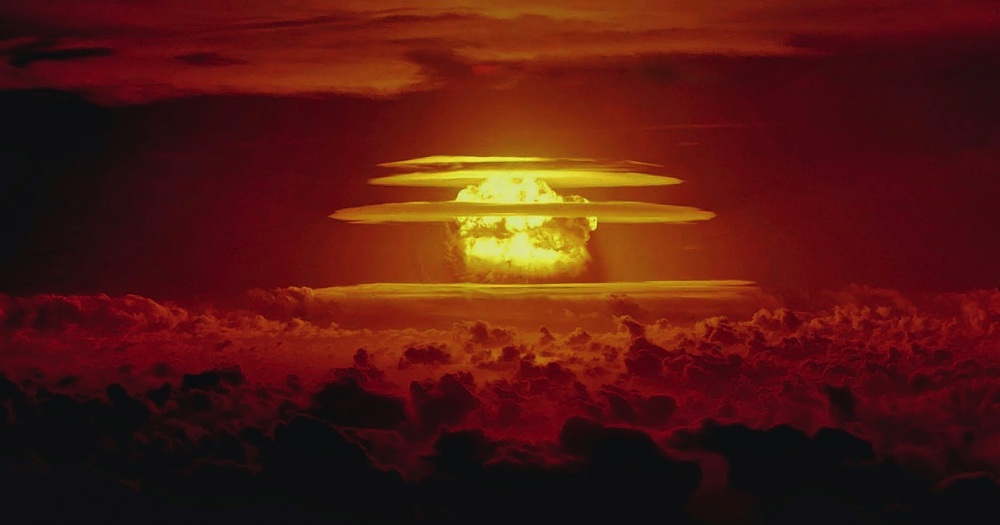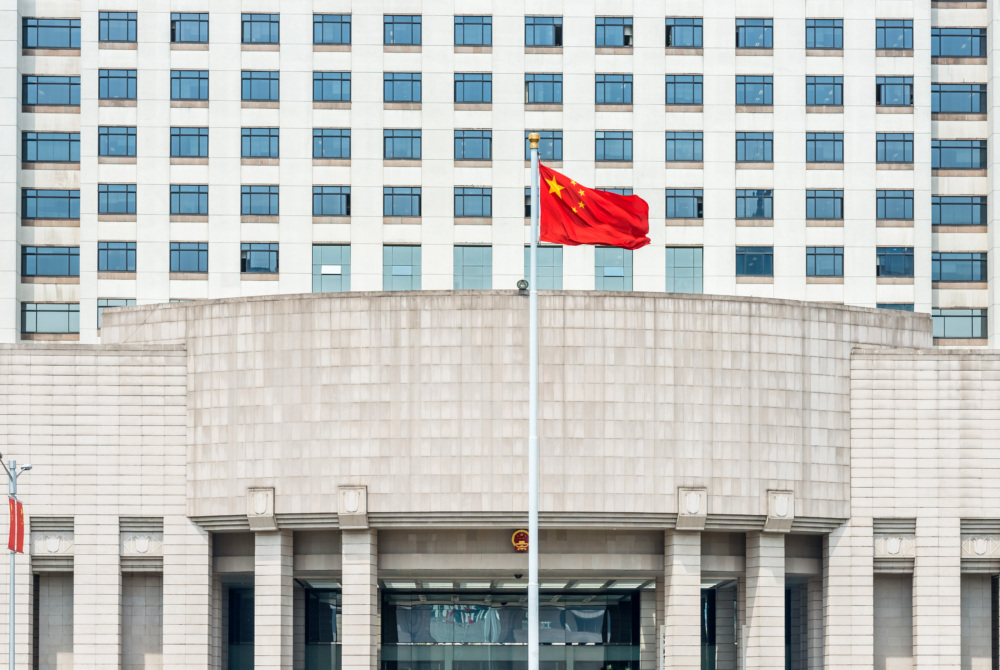This post was written by Daniel Cohen, an intern with NTI’s Global Nuclear Policy Program from January-May 2021. Originally from New York, he recently completed his masters at Georgetown University, where he studied U.S. national security policy.
When the U.S. Senate rejected the Comprehensive Nuclear-Test-Ban Treaty (CTBT) in 1999, it was the first time since the Treaty of Versailles that a major international security treaty had failed to win Senate approval. It was widely viewed as a blow both to the Clinton administration and the global arms control movement. Today, as the Biden administration looks to revitalize U.S. leadership on arms control issues, it is worth exploring why one of the most important treaties in the arms control arena failed to win Senate approval in 1999 and what has changed since.
The United Nations General Assembly adopted the CTBT, which bans all civilian and military nuclear tests, in 1996. It followed decades of radiation-spewing nuclear tests and was meant to serve as a brake on the development of new nuclear weapons around the world. When the treaty opened for signature, then-President Clinton was the first world leader to sign it. A year later, the treaty was sent to the Senate, but opposition from Senate Republicans, in particular then-Senate Foreign Relations Committee Chairman Jesse Helms (R-NC), left it in limbo for two years, without hearings, debate, or a vote. Opponents tended to focus on two main issues: the safety and reliability of the U.S. nuclear arsenal in the absence of explosive testing and the ability to detect potential cheating.
Safety and Reliability of U.S. Stockpile
The CTBT was built on previous nuclear testing limitation agreements to completely ban all explosive nuclear testing worldwide. However, despite support for the ban at the United Nations and among scores of countries, there were significant concerns in the United States that a permanent prohibition on testing would threaten the reliability of the U.S. stockpile. Many opponents of the treaty cited a 1987 report from Livermore National Laboratory stating that a third of all weapon designs introduced to the stockpile since 1958 had required additional testing to correct design or technical flaws. Although the Stockpile Stewardship and Management Program had been created to ensure the reliability of the stockpile by using nonexplosive testing and computer modeling, the program was in its infancy during the 1999 debate, and there were doubts about its long-term viability.
Today, proponents of the CTBT can point to nearly three decades—since the U.S. adopted a voluntary nuclear testing moratorium in 1992—of successful nuclear stockpile management as evidence that the long-term reliability of the nuclear arsenal can be maintained without explosive testing. Neither the Clinton, Bush, Obama, or Trump administrations opted to resume explosive testing, a sign of the bipartisan consensus that the moratorium has not negatively impacted security and reliability. In addition, since 1997 the directors of the national nuclear laboratories and the head of U.S. Strategic Command have certified the stockpile’s reliability on an annual basis. Those who have the knowledge – and responsibility – to assess the viability of the Stockpile Stewardship program have consistently determined that the stockpile can be kept safe, secure, and effective without resuming explosive nuclear testing.
Verification and Monitoring
As with any treaty that bans a particular activity, successful implementation is only as strong as the agreement’s monitoring and verification provisions. Does the CTBT include robust monitoring mechanisms, and are they effective? This was another area of contention in 1999. The treaty called for the creation of an International Monitoring System (IMS), to include 337 facilities spread across the globe to monitor for underground, under water and/or atmospheric tremors, as well as spikes in radiation levels. The system was meant to augment individual nations’ detection capabilities and provide the basis for conducting on-site inspections in the event of an alleged violation.
The problem in 1999 was that this system didn’t yet exist. During the original ratification debate, not a single IMS station or facility had been certified by the Comprehensive Test Ban Treaty Organization’s Technical Secretariat. Even if the system had been in place, there were concerns the technology was too limited to be effective. For example, it was unclear whether monitoring stations would be able to pick up explosive tests with yields smaller than one kiloton.
As with the U.S. stockpile’s reliability, decades of technological improvement and successful operation have dramatically changed the situation. Today, the IMS is 90% complete, with more than 300 facilities located across every continent. These stations operate 24/7, transmitting data to the Technical Secretariat which organizes the data and sends it to states. The system has also demonstrated that it works: IMS stations have successfully detected all six North Korean nuclear tests conducted since 2006. The technology has improved, and it is now believed that the IMS could detect an underground test under one kiloton. Congress and administrations of both parties also clearly see the value of the IMS. The State Department has regularly requested funds for the IMS, including $31 million for fiscal year 2020, and Congress has almost always appropriated the money. Even the Trump administration, which opposed CTBT ratification in its 2018 Nuclear Posture Review, explicitly stated that it would continue to support the IMS.
Looking Ahead
The core arguments against Senate ratification in 1999 – that cheating might go undetected and that foregoing the right to test could compromise the reliability of the stockpile – have been refuted by over 20 years of technological advancement and concrete evidence. Meanwhile, every NATO member, every U.S. treaty ally in the Indo-Pacific, and 170 nations around the world, seeing the value in permanently ending explosive nuclear testing, have ratified the CTBT. To enter into force, however, the treaty must be ratified by the 44 nations listed in its Annex 2 – the states that participated in the negotiation of the CTBT and possessed nuclear power or research reactors at that time, including all of the five original nuclear weapon states (the United States, Russia, China, France and Great Britain). Of these 44 states, only eight have yet to ratify the treaty: the United States, China, India, Pakistan, North Korea, Israel, Iran, and Egypt.
Ratifying the CTBT in the United States would represent a major step forward in a seemingly stalled arms control process and demonstrate to the international community that the U.S. is again committed to leading the world on this important issue.




